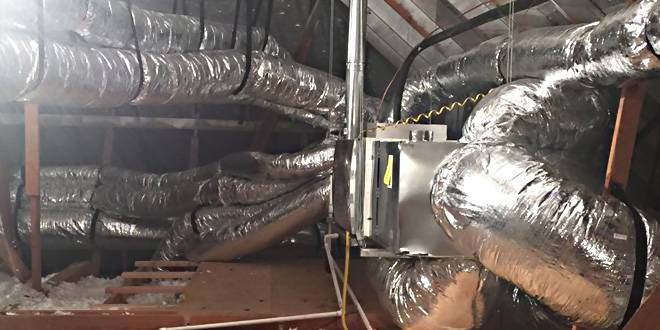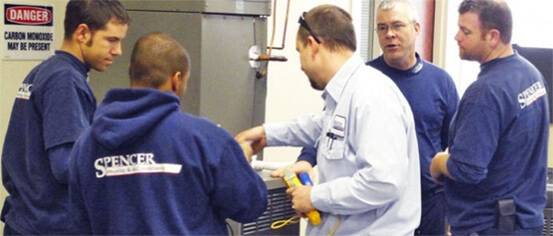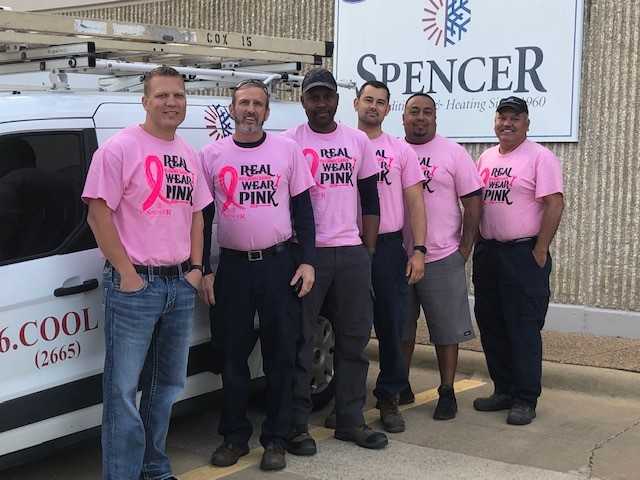
Irving, TX, homeowners and business owners understand the critical role that efficient ductwork plays in maintaining a comfortable indoor environment. Whether you’re installing new ducts or upgrading your existing system, mastering the ins and outs of residential ductwork is essential for achieving optimal air quality and energy efficiency in the Dallas Fort Worth Metroplex.
Understanding Residential Ductwork
Understanding the complexities and nuances of residential ductwork and duct installation is essential for homeowners who aim to optimize their home’s heating, ventilation, and air conditioners (HVAC) system. Ductwork functions as the respiratory system of a home, meticulously channeling air from the HVAC unit throughout the living spaces. This network of tubes is not just a pathway for air; it’s the backbone of your home’s comfort, affecting everything from temperature consistency to air quality.
The Role of Ductwork in Your Home
At its core, ductwork distributes conditioned air from your HVAC system to various parts of your home, ensuring a uniform temperature across different rooms and levels. This distribution system must be carefully designed and installed to match the HVAC system’s output and the home’s layout. When air ducts are correctly sized and strategically placed, it facilitates the efficient flow of air, minimizing energy waste and ensuring that living spaces are comfortable regardless of the season. Conversely, poorly designed ductwork can lead to hot and cold spots, increased energy consumption, and strained HVAC systems.
Types of Ductwork
Ductwork comes in various materials and shapes, each with its own set of advantages and considerations. The primary types found in residential settings include flexible ducts and rigid ducts.
Flexible Ducts
Flexible ducts are exactly what their name implies: ducts made from flexible plastic stretched over a metal wire coil. Their flexibility makes them ideal for navigating around obstacles without necessitating new construction or significant alterations to the existing structure. This makes them a popular choice for retrofitting older homes without existing ductwork or extending HVAC systems into new additions.
Advantages:
Versatility in installation, particularly in tight or awkward spaces.
Generally lower initial installation cost compared to rigid ductwork.
Considerations:
Must be installed carefully to avoid sharp bends or kinks, which can significantly reduce airflow and system efficiency.
Susceptible to tears and punctures if not handled properly.
Rigid Ducts
Rigid ductwork is constructed from materials like sheet metal, fiberglass, or fiberboard. These materials provide a sturdy, leak-resistant pathway for airflow, making them a durable option for new construction and extensive renovations.
Types of Rigid Ducts:
Sheet Metal Ducts: Highly durable and resistant to mold and pests. They can be insulated externally to improve energy efficiency.
Fiberglass Lined Ducts: These have internal fiberglass lining, offering built-in insulation. However, they can trap allergens and degrade over time, potentially affecting air quality.
Fiberboard Ducts: Composed of resin-bonded fibers, these ducts have built-in insulation. While economical, they have a rough interior surface that can slightly impede airflow.
Advantages:
Durability and longevity, with a lower risk of leaks and punctures compared to flexible ducts.
Better airflow characteristics, especially in straight runs.
Considerations:
More challenging and costly to install, especially in existing homes without ductwork.
Certain types, like fiberglass-lined ducts, require careful handling to prevent deterioration and maintain air quality.
Choosing the right type of ductwork for your home involves weighing the specific needs of your HVAC system against the constraints of your home’s architecture and your budget. Whether opting for the adaptability of flexible ducts or the durability of rigid ducts, it’s crucial to work with experienced professionals who can design and install a ductwork system that optimizes your home’s comfort and efficiency. In Irving, TX, where temperatures can vary significantly throughout the year, ensuring your ductwork is properly designed and installed is key to maintaining a comfortable and energy-efficient home.
The Importance of Professional Ductwork Installation
The installation of ductwork within your home is a pivotal factor that influences not only the efficiency of your HVAC system but also the overall comfort and air quality of your living environment. Given its critical role, professional installation of ductwork is not just recommended; it’s essential. Let’s delve deeper into why professional expertise matters in ensuring proper sizing, design, and installation, especially in a city like Irving, TX, with its unique climate and architectural diversity.
Ensuring Proper Sizing and Design
The process of sizing ductwork is a precise science that takes into account the volume of air that needs to be distributed throughout the home, the HVAC system’s capacity, and the specific layout of the house. Incorrectly sized ductwork can have several detrimental effects:
Inefficient Operation: If ducts are too small, they restrict airflow, making the HVAC system work harder, which can lead to increased wear and tear. Conversely, overly large ducts can reduce the speed of airflow, leading to poor air distribution and inefficiency.
Increased Energy Costs: Ductwork that is not sized correctly can cause the HVAC system to consume more energy, leading to higher utility bills. This is because the system must operate longer to heat or cool the home adequately.
Uneven Heating and Cooling: Properly designed ductwork ensures that air is evenly distributed throughout the home. Incorrect sizing can lead to hot and cold spots, making some areas of the home less comfortable than others.
Professional installers use detailed calculations and consider the unique aspects of your home to determine the optimal size for your ductwork. This precision ensures that your HVAC system operates efficiently, providing consistent comfort while minimizing energy consumption.
Avoiding Common Installation Pitfalls
Ductwork installation is fraught with potential pitfalls that can compromise the system’s efficiency and the home’s air quality. Some of these pitfalls include:
Leaks: Poorly connected ducts can lead to air leaks, significantly reducing the system’s efficiency. Professionals ensure that all joints and seams are properly sealed, using durable materials designed to withstand the pressures and temperatures of the HVAC system.
Improper Insulation: Ducts that run through unconditioned spaces, such as attics or crawl spaces, need adequate insulation to prevent heat loss in winter and heat gain in summer. Professional installers know the right type and amount of insulation required for different parts of the home.
Compliance with Local Codes: Irving, TX, like many cities, has specific building codes that dictate standards for HVAC and ductwork installation. Professionals are familiar with these regulations, ensuring that your ductwork meets all local requirements for safety and efficiency.
Professional installers are also adept at navigating the architectural diversity of homes in Irving, TX. Whether dealing with a historic home that requires a custom ductwork solution or a modern build with specific design challenges, experienced technicians can implement the most effective ductwork configuration. They take into consideration the layout, the need for minimal aesthetic disruption, and the optimal placement for vents and returns.
Maximizing Efficiency with Ductwork Upgrades
Maximizing the efficiency of your HVAC system through ductwork upgrades is a strategic move for any homeowner, especially in climates with significant temperature variations like Irving, TX. Over time, existing ductwork can become less efficient due to leaks, lack of insulation, or simply because the materials are outdated and no longer perform as well as newer options. Addressing these issues through upgrades can significantly enhance your home’s energy efficiency, comfort, and even its value.
Sealing and Insulation
Air leaks in ductwork are among the primary culprits of HVAC inefficiency. They allow conditioned air to escape into unoccupied spaces like attics, crawl spaces, or even outside, forcing your system to work harder to maintain the desired temperature. This not only leads to increased energy consumption but also puts unnecessary strain on your HVAC system, potentially shortening its lifespan. Professional sealing involves identifying and sealing these leaks, often using mastic sealant or metal tape, ensuring that air is delivered where it’s needed without waste.
Insulation is equally important. Ducts that run through unconditioned spaces should be properly insulated to maintain the temperature of the air flowing through them. Without adequate insulation, warm air can cool down, or cool air can warm up before it reaches its destination, reducing the system’s efficiency and causing your HVAC unit to run longer cycles. Professional insulation of ductwork minimizes this thermal loss, enhancing overall system efficiency.
The Benefits of Upgrading Your Ductwork
Upgrading your ductwork can bring several tangible benefits, further reinforcing the value of such an investment:
Improved Airflow: Modern ductwork materials and design principles support better airflow, ensuring that your HVAC system can distribute air more effectively throughout your home. This results in more even temperatures and can eliminate hot or cold spots in rooms furthest from the HVAC unit.
Enhanced Indoor Air Quality: Old, leaky ducts can allow dust, pollen, and other pollutants to enter your home’s air supply. By upgrading to tightly sealed and insulated ductwork, you can significantly reduce the entry of these pollutants, improving the air quality inside your home. This is especially beneficial for individuals with allergies or respiratory conditions.
Reduced Environmental Impact: Energy-efficient ductwork reduces the amount of energy your HVAC system needs to use to heat or cool your home, thereby decreasing your carbon footprint. In an age where environmental consciousness is more important than ever, upgrading your ductwork is a step toward a more sustainable lifestyle.
Lower Utility Bills: Perhaps the most immediate benefit of ductwork upgrades is the potential for lower utility bills. By reducing energy loss and improving system efficiency, you can enjoy significant savings on heating and cooling costs over time.
Example: A Home in Irving, TX
Consider a typical home in Irving, TX, where summers are hot and winters can be surprisingly chilly. The original ductwork is several decades old, with visible signs of wear and insufficient insulation. By upgrading to new, energy-efficient ductwork, sealed and insulated according to modern standards, the homeowners noticed an immediate improvement in their comfort levels. Their HVAC system no longer needed to run excessively to maintain comfortable temperatures, leading to noticeably lower energy bills. Additionally, they observed a reduction in dust and allergens in their home, contributing to a healthier living environment.
For homeowners in Irving, TX, and similar climates, upgrading your ductwork is a wise investment that pays dividends in comfort, health, efficiency, and cost savings. By prioritizing sealing and insulation and considering the upgrade to modern, energy-efficient ductwork materials, you can significantly enhance the performance of your HVAC system, contributing to a more sustainable and comfortable home.
Choosing the Right Contractor for Your Ductwork Needs
Choosing the right contractor for your ductwork installation or upgrade is a pivotal decision that directly impacts the comfort, energy efficiency, and air quality of your home. Given the significance of this decision, particularly in a place with diverse architectural styles and climate challenges like Irving, TX, knowing what to look for and the right questions to ask potential contractors is crucial. Let’s delve into the criteria for selecting a ductwork installation professional and outline key questions that will help ensure you choose the best contractor for your needs.

What to Look for in a Ductwork Installation Professional
Experience with Homes in Irving, TX
Local experience is invaluable. A contractor familiar with Irving’s specific climate conditions and local building codes is better equipped to address the unique challenges your home might present. This local expertise ensures that your ductwork is not only compliant with regulations but also optimized for the area’s weather patterns, enhancing comfort and efficiency.
Knowledge of the Latest Ductwork Technologies and Materials
The field of HVAC and ductwork installation is continually evolving, with new technologies and materials developed to improve efficiency and performance. A contractor who stays abreast of these developments can offer you the most current solutions, potentially saving you money and improving system longevity. This knowledge is indicative of a commitment to excellence and continuous improvement in their field.
A Solid Track Record of Satisfied Customers
Past customer experiences can provide valuable insights into a contractor’s quality of work, reliability, and customer service. A contractor with a history of satisfied customers is likely to deliver high-quality work and address any concerns promptly and effectively.
Questions to Ask Potential Contractors
To further ensure you’re selecting the right contractor for your ductwork needs, consider asking the following questions:
Can You Provide References from Previous Installations in the Area?
References allow you to verify the contractor’s experience and customer satisfaction directly. Follow up with these references to ask about their overall experience, any issues encountered, and how those were resolved.
How Do You Calculate the Correct Ductwork Sizing for a Home?
This question assesses the contractor’s technical expertise and their approach to ensuring your ductwork is perfectly tailored to your home’s needs. The answer should include mention of performing Manual J calculations (for determining heating and cooling loads) and Manual D calculations (for the ductwork design), which are the industry standards for ensuring systems are correctly sized.
What Steps Do You Take to Ensure the Ductwork is Sealed and Insulated Properly?
Proper sealing and insulation are critical for ductwork efficiency. The contractor should be able to describe their methods for sealing joints and seams (such as using mastic sealant or metal tape) and their strategy for insulating ducts, particularly those passing through unconditioned spaces. This question also gives insight into their attention to detail and commitment to energy efficiency.
Selecting the right contractor for your ductwork installation or upgrade in Irving, TX, is a decision that should be made with meticulous care. Opting for a contractor with deep local experience, a thorough and current understanding of the HVAC field, and a solid foundation of satisfied customers is pivotal to ensuring a successful project outcome. Additionally, engaging in a detailed conversation with potential contractors can provide deeper insights into their expertise and confirm that their approach is well-suited to meet your specific requirements and expectations.
This is where Spencer Air Conditioning and Heating distinguishes itself as an exceptional choice for your ductwork needs. With years of dedicated service in Irving, TX, Spencer Air Conditioning and Heating combines extensive local knowledge with the latest advancements in HVAC technologies and materials. Our longstanding commitment to customer satisfaction is reflected in the positive experiences and feedback from our numerous clients in the area.
At Spencer Air Conditioning and Heating, we understand the importance of correctly sized, sealed, and insulated ductwork to the efficiency, reliability, and overall comfort of your home. We pride ourselves on our meticulous attention to detail and our proactive approach to addressing your HVAC system’s specific needs. By choosing Spencer Air Conditioning and Heating, you’re not just getting a contractor; you’re partnering with a local leader in HVAC solutions dedicated to enhancing the comfort and air quality of your home for years to come.
Breathe Easy with Expert Ductwork Solutions 🏡💨
Is your home as comfortable and efficient as it could be? Spencer Air Conditioning and Heating specializes in professional ductwork installation and upgrades in Irving, TX, ensuring your home breathes easily all year round. Say goodbye to uneven temperatures and high energy bills, and hello to improved air quality and comfort. Contact Spencer today and take the first step towards a perfectly balanced indoor climate. Your home deserves the best—let’s make it happen together! 🌟🔧





